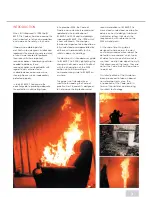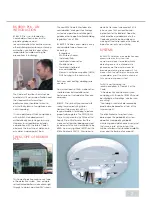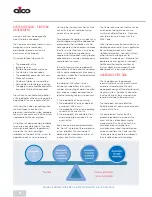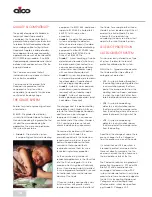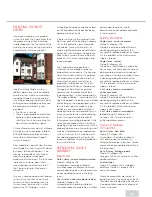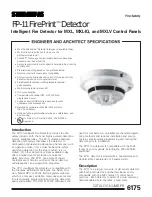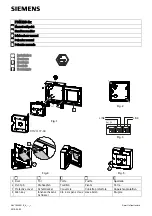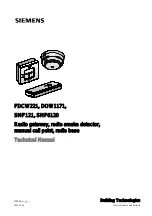
recommendations of BS 5839: Pt.6
more clearly understood, and to offer
advice on how to design, install and
maintain a system that meets the
requirements, with reference to the
2004 amendments.
At the same time, this guide is
designed to help answer the most
commonly asked questions about fire
detection; for example, ‘which types
of detector to use and where not to
use them’, and to help dispel the myth
that alarms are all the same. They are
not, as the Code itself is all too anxious
to point out.
This latest edition of the Guide has
been produced to take on board
new developments since the
introduction of the Code, both in
terms of fire statistics and evolving
fire safety technology.
3
INTRODUCTION
When first introduced in 1995, the BS
5839: Pt.6 Code of Practice became the
most important set of recommendations
ever made on fire safety in the home.
It had an immediate impact on
architects, system designers, installers and
landlords in the private or public sector, all
of whom were required to familiarise
themselves with these important
recommendations. Landlords in particular
needed to abide by these
recommendations, as legal liability with
regard to ‘duty of care’ would
undoubtedly become a serious issue
should a fire occur in an inadequately
protected property.
In short, BS 5839: Pt.6 became the
essential guide to providing adequate
fire protection in all dwelling types.
In September 2004, the Code of
Practice was extensively revised and
updated by the publication of
BS 5839: Pt.6: 2004 and immediately
superseded BS 5839: Pt.6: 1995, which
is now withdrawn. The changes
therein are important and need to be
fully understood and appreciated by
all those with responsibility for fire
safety in domestic dwellings.
This document is intended as a guide
to BS 5839: Pt.6: 2004, highlighting the
changes that have come into effect
with the introduction of the 2004
edition while still remaining a
comprehensive guide to BS 5839 as
a whole.
This guide is not intended as a
substitute for reading the Code of
practice itself. Instead, it’s designed
to help make the implications and



